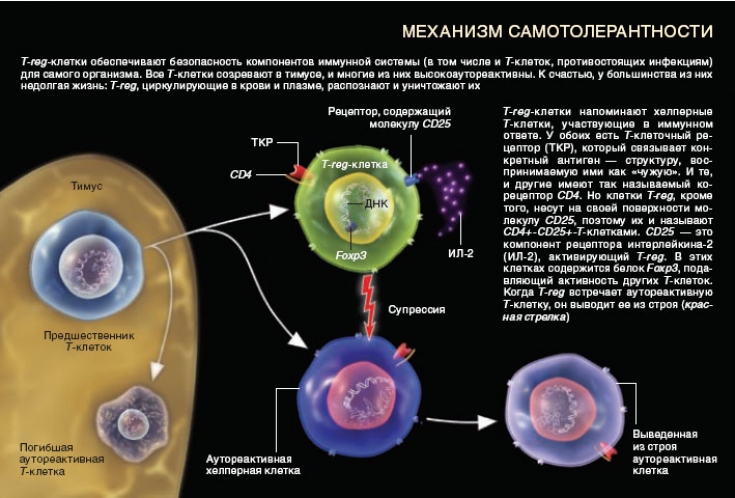Scientists from the University of California have found in experimental mice that regulatory T cells (Tregs, «tee-regs») – representatives of cellular immunity capable of activating stem cells in the skin for hair growth.
It has been found that when these specific cells fail, the stem cells cannot regenerate the hair follicles, which is the cause of baldness. The study, which was published in the journal Cell, indicates that improper functioning of Tregs can lead to alopecia and autoimmune disorders that cause hair loss.
Given that the same stem cells are involved in the function of skin regeneration after injury, the researchers speculate that Tregs may also have a skin repair function. The article estet-portal.com will help you understand the role of Tregs in the development of causes of baldness at the cellular level.
The role of Tregs in the human body
Tregs usually inform the immune system about foreign agents in the body. If Tregs work in hyperactivation mode, allergic reactions to, for example, cat dander or peanuts occur, and autoimmune diseases develop.
Follow us on Telegram
More Tregs are located in the lymph nodes, but some of them live permanently in other tissues, where they have acquired a new function – participation in local metabolic processes, anti-inflammatory function.
Rosenblum and colleagues found that Tregs establish tolerance of the immune system to opportunistic skin flora in newborn mice, and these cells are also able to secrete molecules that help full-fledged wound healing in adults. Violation of the work of Tregs is probably one of the causes of baldness.
Experimental confirmation of the role of Tregs in the causes of baldness
Rosenblum (a dermatologist and immunologist by profession) set out to clarify the role of these immune cells in maintaining healthy skin. In an experiment, he and his team developed a technique to temporarily remove Tregs. They then shaved off the mice's skin areas to observe the affected skin.
The role of collagen in preventing hair loss
"Hairline did not grow on the shaved areas of the skin" Rosenblum said. Removal of Tregs from the skin only stops hair regrowth if it is done within the first three days after hair removal, because that is when the follicle regenerates. If you remove Tregs later, when regeneration has already begun, then this will not affect hair restoration.
Skin stem cells are directly activated by anti-inflammatory immune cells.
Another study led by Niwa Ali, PhD, also confirmed the role of Tregs in initiating hair follicle regeneration, and their disruption is the cause of baldness.
Key mechanisms of how Tregs work
Tregs trigger stem cell activation through a cell-to-cell interaction called the Notch pathway.
Researchers have found that Tregs in the skin secrete a specific signaling protein called Jagged 1 (Jag1) at a much higher level than Tregs in other tissues.

It was then demonstrated that when Tregs were removed from the skin, the secretion of the signaling protein Jag1 was significantly reduced. The scientists replaced Tregs with microscopic balls that were coated with the Jag1 protein, as a result of the restoration of intercellular interaction, the stem cells successfully activated the regeneration of the follicle.
"Stem cells trust Tregs to decide when they need regeneration," says Rosenblum.
Perspectives in the correction of the causes of baldness and not only
Rosenblum contributed to the emergence of a promising direction in the correction of the causes of baldness, autoimmune diseases, in which the key mechanism is associated with a violation of the regeneration of the hair follicle. The study supports the idea that cells of the immune system play a much more important role in cellular repair and wound healing, since the same follicle stem cells carry out skin repair after traumatic injury.
You may be interested in an article on our website estet-portal.com in the section. "Trichology" Temporary alopecia or seasonal hair loss
According to ScienceDaily







Add a comment